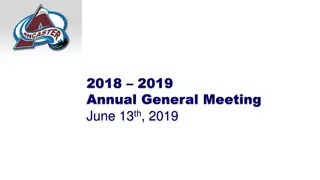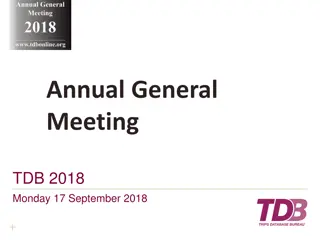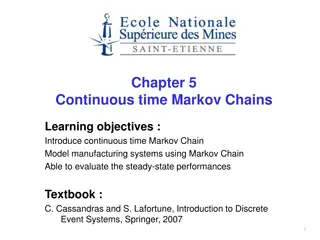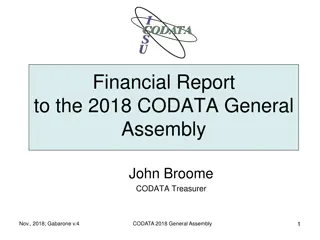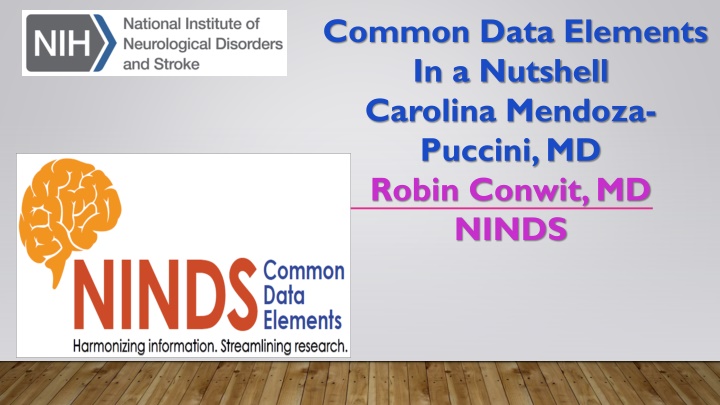
Understanding NINDS Common Data Elements Project
Explore the NINDS Common Data Elements (CDE) Project designed to establish data standards for clinical research in neuroscience. Learn about the goals, benefits, and terminology of CDEs in research studies.
Download Presentation

Please find below an Image/Link to download the presentation.
The content on the website is provided AS IS for your information and personal use only. It may not be sold, licensed, or shared on other websites without obtaining consent from the author. If you encounter any issues during the download, it is possible that the publisher has removed the file from their server.
You are allowed to download the files provided on this website for personal or commercial use, subject to the condition that they are used lawfully. All files are the property of their respective owners.
The content on the website is provided AS IS for your information and personal use only. It may not be sold, licensed, or shared on other websites without obtaining consent from the author.
E N D
Presentation Transcript
Common Data Elements In a Nutshell Carolina Mendoza- Puccini, MD Robin Conwit, MD NINDS
NINDS CDE PROJECT What is the CDE Project? NINDS initiated the development of Common Data Elements (CDEs) as part of a project to develop data standards for clinical research in neuroscience. The CDEs are content standards that can be applied to various data collection models and are intended to be dynamic and may evolve over time. CDEs are not a database.
GOALS OF THE CDE PROJECT Develop common definitions and standardize case report forms (CRFs) and other instruments Help investigators conduct clinical research through the development of these uniform formats by which clinical data can be systematically collected, analyzed and shared across the research community
CDES AND NINDS GRANTS NIH-funded and other research studies use CDEs or are CDE- compatible FOA: PAR-18-420 (for NINDS Phase III /U01 Clinical Trials CDEs Required) All clinical research studies should use CDEs Clinical research projects will be accelerated New investigators can build on consensus data elements Start-up of multi-center and international clinical research efforts will be streamlined
DEFINITIONS Data Element: Information that describes a piece of data to be collected in a study* Common Data Element (CDE): A data element that is common to multiple data sets across different studies* A CDE includes a name, precise definition, and semantic value with clear definitions and permissible values A CDE is consistent and harmonized across different datasets *National Library of Medicine
NINDS CDE TERMINOLOGY : CLASSIFICATION General Core: required for all NINDS-funded studies Disease Core: required information applicable to any disease-specific study Supplemental Highly Recommended: essential information for specified conditions, study types, or designs Supplemental: recommended but not required use depends upon study design, protocol, or type of research Exploratory: under development or not yet validated
Current NINDS CDEs Over 20 Disease Areas, 18,000 CDEs & 1400 Instruments * Include Pediatric-specific recommendations
CDE DEVELOPMENT: PROCESS CDEs are identified, developed, and vetted by experts in the scientific community Collaborative involvement with other NIH institutes and federal agencies such as the National Library of Medicine, CDC, DoD Alignment with International Data Standards (ISO), Clinical Data Interchange Consortium (CDISC), whenever possible Insight from patient advocacy groups and industry NINDS provides continuous guidance, review, oversight, and updates
CDE DEVELOPMENT: TIMELINE TYPICAL TIMEFRAME 2 - 4 weeks DEVELOPMENT STEP NINDS identifies Working Group (WG) members and WG Chair(s) NINDS works with Chair(s) to divide WG into subgroups and to nominate subgroup Chair(s) Introductory meeting of WG at national conference or via web conference Subgroups meet every 3 - 5 weeks via conference call to develop CDEs for assigned areas 2 - 4 weeks 1-2 hours 6 - 9 months NINDS Reviewof all subgroups CDEs Subgroups revise CDEs based on feedback from NINDS review Public Reviewof WG s CDEs Subgroups review CDEs based on feedback from Public Review Post version 1.0 of CDEs on the website 1 month 1 - 2 months 6 - 8 weeks 1 month 2 - 4 weeks Total 12 - 18 months
POTENTIAL BENEFITS OF CDES Reduce time/cost to develop data collection tools Increased efficiency not creating new Case Report Forms. Create a CRF in the CDE website and download into word, PDF or CSV. Reduce study start-up time and cost of overall trial Reduce time creating e-CRFS. Data dictionaries can be downloaded at the CDE website and uploaded into the electronic data collection system. Improve data quality/ Facilitate data collection Uniform data collected in a standardized manner across the studies. NINDS/NIH-compliant.
POTENTIAL BENEFITS OF CDES Facilitate data sharing/comparisons between studies and meta-analyses Datasets will have the same variable names, harmonization will be easier and will increase the opportunities of establishing collaboration among different labs/study teams Improve opportunities for validation of exploratory elements/instruments Validation of these elements/instruments to be used in future clinical trials (Clinical Trials Readiness?) Increase CDE awareness in the neuroscience community Publications, presentations and other ways to disseminate the usability of the CDEs in neuroscience studies
ACCESSING THE NINDS CDES NINDS CDE Website www.commondataelements.ninds.nih.gov Contact NINDS CDE project team NINDSCDE@emmes.com Carolina.mendoza-puccini@nih.gov Conwitr@ninds.nih.gov








